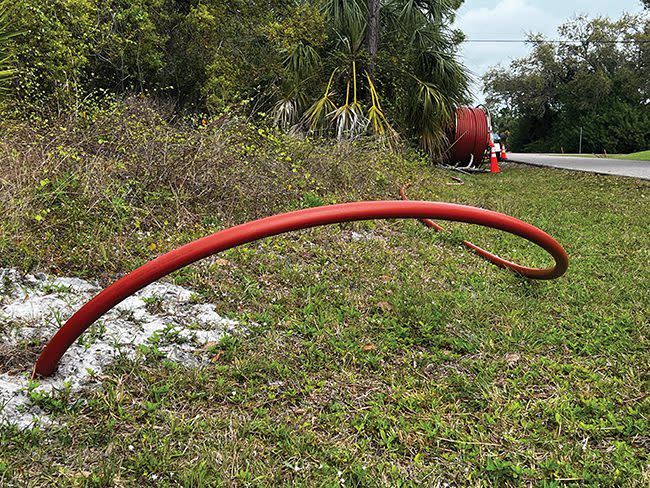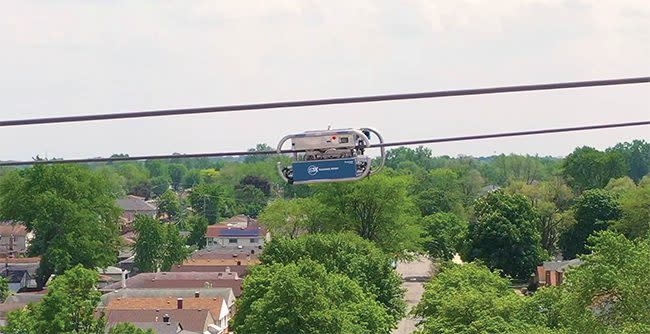Underground or Overhead: Exploring Line Options to Enhance Grid Resiliency
The power grid has been a topic that has dominated headlines in the energy industry and mainstream news over the past few decades. Despite this increased focus, with each passing year the problem is only getting worse. Contrary to the popular buzzword, the problem is not actually power grid reliability. Multiple studies have shown that the grid is reliable more than 99.9% of the time. Homeowners are not experiencing prolonged service interruptions in most conditions, showcasing that the grid is ultimately doing what it was intended to do a majority of the time: provide power. However, what we are seeing now is that the grid fails spectacularly in extreme weather events, demonstrating that resiliency is a much bigger problem than reliability. According to Climate Central, 83% of reported major outages in the U.S. between 2000 and 2021 were attributed to weather-related events. Furthermore, the average annual number of weather-related power outages increased by roughly 78% in the second half (2011–2021) of that study compared to the first half (2000–2011).
Complicating Factors
There are three major reasons why we are seeing an increase in power outages related to weather. Weather Is More Extreme Now. It is often hyperbole to claim that we are living in the best or worst times, but the facts clearly show that extreme weather is worse than ever before. The journal Nature Water published a study in March 2023 that detailed how the intensity of extreme drought and rainfall has sharply increased over the past 20 years. The Environmental Defense Fund reports that the proportion of major hurricanes (Category 3 or above) in the Atlantic Ocean has doubled since 1980. And the summer of 2023 was the hottest ever recorded, according to the National Aeronautics and Space Administration (NASA). People Are Flocking to the Coasts. The National Oceanic and Atmospheric Administration (NOAA) Office for Coastal Management reported that more than 128 million people, or about 40% of the U.S. population, lived in coastal counties in 2023. That’s despite the fact that the U.S. coastline (excluding Alaska) accounts for less than 10% of the nation’s land mass. It’s hard to argue the allure of the sun and the sand, but heavily populated areas tax existing grid infrastructure. Making matters even worse is that these desirous areas are also the most prone to severe weather such as hurricanes and extreme heat, and the increased population density means that every one of these events can impact a much larger number of residents. Overhead Lines Are Aging. At the end of 2022, the White House acknowledged that an estimated 70% of the nation’s lines are more than 25 years old. This aging infrastructure leads to vulnerabilities in American communities and economic interests. Those vulnerabilities range from safety concerns (including food spoilage, disrupted communication, and lack of access to heating/cooling) to financial impact attributed to the loss of business revenues during extended outages. Extreme weather is a direct result of climate change, and while we can certainly take steps to reduce our impact on global warming, this clearly isn’t an easy fix. Suggesting that people stop moving to the coasts might get you laughed out of some rooms. But there are some immediate and cost-efficient innovations and solutions to the transmission line problems.
Solution No. 1: Undergrounding Lines
One option to harden the grid would be to bury power lines underground (Figure 1), where they are much less susceptible to the impact of extreme weather. This is certainly not a new concept, but reports estimate that only between 18% and 25% of all power lines in the U.S. are underground. The biggest obstacle is cost, with many utilities proving unable or unwilling to take on the associated expenses of underground lines.
 |
1. Burying power lines underground helps mitigate the impacts of extreme weather on the grid. Utilities and grid operators recognize the additional cost of the undergrounding process, which is why more lines have not been buried, but some utilities are taking steps to finance undergrounding efforts. Source: POWER |
We’ve seen multiple scenarios where the fires on the West Coast were exacerbated by a tree or branch falling on overhead lines. In the Midwest, high winds and tornadoes have the same effect on overhead lines, bringing them down, at times causing fires or other dangerous situations. The same thing happens with hurricanes in the Southeast. The common link in the above scenarios is extreme weather, and all the problems become worse when overhead lines are affected. Homeowners who are cut off from their power supply risk injury or even death when left in the dark, with food spoilage, carbon monoxide poisoning from misused generators, and no access to heating, ventilation, and air conditioning (HVAC) systems in extreme temperatures multiplying the impact of the weather event. On a larger scale, the Department of Energy estimates that power outages cost American businesses about $150 billion annually. Where lines have been buried underground, the impact is felt immediately. Consider the Florida Power & Light Company (FPL), which was praised greatly in its response to Hurricane Ian in 2022, one of the most powerful and costly hurricanes in U.S. history. A primary reason two-thirds of FPL’s customers had power back after just one day of restoration is attributed to its underground neighborhood power lines performing five times better than overhead neighborhood power lines in southwest Florida. FPL was able to achieve these results because it proactively launched a pilot program in 2018 to find cost-effective ways to underground lines in targeted communities. The company focused on areas that had a history of hurricane outages, vegetation-related interruptions, and other reliability factors, and got buy-in from government and customers that it would ultimately provide a return on the upfront investment. A similar scenario played out with WEC Energy Group in the Midwest. The utility surveyed customers and found the vast majority were willing to pay for underground lines. The end cost proved to be about $4.30 per month, or a modest 5% increase for customers, according to the Power Delivery Intelligence Initiative (PDI2). PDI2 also reports that underground lines have a lifespan that is two to three times longer than above-ground, wood pole structures, are 10 times more reliable and safer, and cost three to seven times less money to maintain. Finally, from an environmental and sustainability perspective, Scenic America advocates for underground lines because they eliminate the risk of mid-air bird collisions and electrocutions, while also requiring less land disturbance during installation—which helps preserve both natural habitats and scenic beauty.
Solution No. 2: Improving Overhead Lines
In some situations, underground lines are not possible. Either the funding is not available, or construction proves to be too challenging to move lines underground. After all, it is a lot easier to bury lines in farmlands in the middle of the country than in congested urban areas. But aging overhead lines are not helping the overburdened grid. They are at capacity and can’t take on additional loads in their current state. Even efforts to move to renewable energy resources are being affected because wind and solar projects move mostly on overhead lines. Therefore, there is a backlog of renewable projects awaiting approval until lines can either be replaced or improved to take on the added capacity. Thankfully, there are advanced conductor technologies available that will help increase capacity in these overhead lines. The first is treating overhead conductors with a heat-dissipating coating. This coating prevents the sun’s heat from penetrating the cable, while also allowing heat within the cable to emit, keeping the cable cooler. As we know, when a cable gets hot, it sags and droops, restricting the amount of energy that can flow through it.
 |
2. A heat-dissipating coating can be applied to overhead line conductors. The coating prevents the sun’s heat from penetrating the cable, and allows heat within the cable to emit, keeping the cable cooler. When a cable gets hot, it sags and droops, restricting the amount of energy that can flow through it and perhaps creating a safety hazard. Prysmian has developed its E3X Robot System, shown here, which can apply the coating to existing wires in the field. Courtesy: Prysmian Group |
This coating is applied to replacement cables as they are manufactured, providing newer, better wires for existing overhead structures. If the cable still has usable life remaining, Prysmian is even having success with a robot applying the coating in the field on existing wires to reduce power grid congestion, winning an Edison Award for its E3X Robot System (Figure 2) in 2022. A second solution to aging overhead wires is to replace existing conductors with new conductors made with a carbon composite strength member. While carbon fiber is a more expensive material than the steel traditionally used, it is lighter weight and does not sag even at high temperatures. That allows line capacity to be upgraded without replacing existing structures. By applying a heat-dissipating coating, a utility or grid operator can expect a 20% to 25% improvement in capacity. Switching to carbon fiber strength members will net a 50% to 100% capacity increase.
Enhancing Grid Resiliency
In today’s era of extreme weather, the grid is taxed like never before. While there may not be one singular solution to the grid’s woes, incremental improvements are possible by focusing on aging transmission lines. Undergrounding lines offer safety, aesthetic, and environmental benefits, while improving overhead lines increases their performance.
—Brian DiLascia is senior vice president and general manager of the Power Grid business for Prysmian North America and has been with the company for more than 25 years.

 Yahoo Finance
Yahoo Finance 

